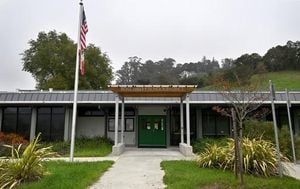As the school year kicks off across Europe and the United States, the landscape of children’s learning is undergoing a remarkable transformation. From the digital corridors of YouTube to the cozy corners of living room storytime, families, educators, and experts are reimagining what it means to foster curiosity, creativity, and social connection in the next generation. The latest research and firsthand accounts reveal a dynamic blend of opportunities and challenges—some surprising, some sobering, but all deeply human.
On September 8, 2025, new research data emerged, shining a spotlight on how young people, their teachers, and parents across Europe are harnessing YouTube as a tool for education, community, and creativity. According to a survey conducted by Livity, an independent youth consultancy, more than 7,000 teens aged 13 to 18 from seven European countries shared their digital habits. The results? An impressive 74% of these young people said they watched YouTube videos to learn something new for school. Even outside the classroom, 71% reported turning to YouTube for fun learning, outpacing other digital platforms. In fact, 73% of respondents said they watched video content at least a couple of times a week to boost their knowledge—whether for schoolwork or just pure curiosity.
The appeal of video learning isn’t lost on the teens themselves. Fryni, an 18-year-old from Greece, captured the sentiment in a focus group: “I use (YouTube) a lot… purely for my homework and it is so interesting, it brings me joy.” This joy in discovery, it seems, is a thread running through the educational experiences of many young people today.
But it’s not just students who are logging on. According to research by Oxford Economics, teachers and parents across all EU27 countries and the UK are also tapping into YouTube’s vast library. A striking 84% of surveyed teachers said they used YouTube content in their lessons or assignments. More than two-thirds (67%) agreed that the platform helped increase student engagement—a crucial ingredient for learning in any era. Parents, too, are seeing the benefits: 80% of those who use YouTube believe it offers quality content for both learning and entertainment, while 71% feel confident guiding their children toward responsible use. Two-thirds (66%) even said YouTube helps their kids discover the world.
Recognizing its growing influence, YouTube has rolled out youth-focused products like YouTube Kids and Supervised Experiences, developed with guidance from independent experts. These platforms now reach over 100 million active users every month, offering experiences designed with young learners in mind.
Yet digital learning isn’t the only story unfolding in children’s education. In the U.S., a different kind of educational journey is gaining momentum—one that takes place at home, often far from the glare of screens. On the same September day, a parent shared their reflections after six years of homeschooling two children who previously attended public school. Initially, the parent worried that homeschooling would leave their kids isolated or friendless. But reality proved otherwise.
“My kids are neither friendless nor antisocial, and if anything, homeschooling has only helped them develop deeper relationships with their peers,” the parent wrote. Now in 10th and 12th grades, the children lead lives full of part-time jobs, nights out, extracurricular activities, and strong friendships—much like their parents did during their own teenage years. Early in their homeschooling journey, the family connected with local groups via Facebook, attended park playdates, and participated in classes at zoos and museums. These connections helped the children develop passions for the performing arts, film, and volunteering, and allowed them to make friends across homeschooling, public, and private school communities.
“Sure, it took a bit of effort to find our homeschooling village, but now that we have, they’re always making plans with friends (and begging to borrow the car),” the parent shared. Their experience has been so positive that they now recommend homeschooling to others, especially those worried about socialization. “Chances are, there’s a whole homeschool community going on around you and you don’t even know it.”
While digital platforms and homeschooling networks are thriving, another tradition is quietly slipping: the simple act of reading aloud to young children. Experts are sounding the alarm as storytime with little ones declines on both sides of the Atlantic. According to the most recent Scholastic Kids & Family Reading Report, the percentage of U.S. children who read for fun at least once a week dropped from 79% in 2010 to 72% in 2022. Fewer parents are reading to their newborns, too—down from 43% in 2018 to 37% in 2022. In the UK, a December 2024 survey found that only 40% of parents enjoyed reading to kids under 13, and just 41% of children ages 0 to 4 were read to frequently, a steep decline from 64% in 2012.
The reasons are many: busy schedules, increased schoolwork, and, perhaps, the ever-present lure of digital devices. Nearly half of parents report that their under-13 children have too much schoolwork to read books—a sharp jump from 25% in 2012. And 34% of UK parents say they simply wish they had more time for storytime.
Ann Cooksey, head of children’s services at Appleton Public Library, understands the struggle. “It’s a really big job,” she said, acknowledging the pressures on caregivers. Still, she’s quick to point out the benefits: reading together strengthens family bonds, creates happy memories, and builds the foundation for lifelong learning. “It’s fun and games, but all of it is learning,” Cooksey explained, describing how even three-year-olds internalize stories and develop narrative skills through play.
Appleton pediatrician Santi Budiasih echoed these thoughts, emphasizing that reading aloud boosts both receptive and expressive literacy, sparks imagination, and helps children express their opinions. Even before babies understand language, reading together “adds to a nurturing environment for the baby,” Budiasih said.
Programs like Reach Out and Read are stepping in to help, distributing about 23,000 books locally in 2023 through well-child visits at over 20 medical clinics. Caregivers are encouraged to find books they and their children enjoy—whether picture books, wordless stories, or nonfiction that taps into a child’s interests. The message from librarians and doctors alike is clear: there’s no single “right” way to do storytime, and every effort counts.
Across continents and communities, the paths to learning are as varied as the families who walk them. Whether it’s a teen in Greece finding joy in algebra videos, a parent in the U.S. building a vibrant homeschooling community, or a librarian in Wisconsin championing the power of storytime, the threads connecting education, creativity, and social connection remain strong—even as the world changes around them.
In the end, it’s these small, everyday choices—what video to watch, which book to read, which group to join—that shape not only how children learn, but also how they see themselves and the world. And that, perhaps, is the most important lesson of all.




